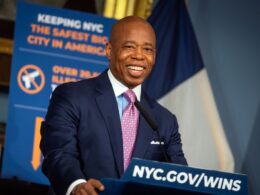Thank you to state Comptroller Tom DiNapoli for publishing an analysis of the balance of payments between the 50 states and the federal government. This is his ninth annual review, continuing a tradition that began when Pat Moynihan first arrived in the U.S. Senate in 1977 and that Moynihan kept up for all his 24 years of service.
Moynihan, always the professor, called his report the “fisc.” While the word “fisc” was archaic (look it up and learn something), the purpose was, and remains, cutting edge: How much does each state pay into the U.S. treasury in total taxes and how much government spending does each state receive from Uncle Sam?
Thus there are surplus states and deficit states, or recipient states and donor states and, of course, it does not balance to zero since the U.S. government annually runs hundreds of billions in the red. Getting the most back from the federal government are the poorest states like Mississippi and West Virginia, which makes sense since they need the most assistance. At the other end are the richest ones like New York, Massachusetts and Washington State paying for that assistance.
The other factor than poverty is government spending, so Virginia is a big surplus state being loaded with federal facilities like the Pentagon and No. 1 on the DiNapoli’s list is New Mexico, which has the Sandia National Laboratories and the Los Alamos National Laboratory, both funded with billions from the feds every year. On that scale, New York also comes up short, with many fewer per capita federal employees and at the bottom for federal highway expenditures.
Which is why for decades New York has been one of the biggest donor states, sending more money each year to Washington than we got back. What temporarily changed that was COVID, as the Congress sent out billions to state and local governments and businesses and individuals when the pandemic began in 2020 in order to keep people afloat and prevent the economy from collapsing as the virus tore through the country, killing more than a million Americans.
DiNapoli’s report finds that during the last four years, due to all those COVID dollars, New York was a surplus state, but that is ending. Yet even being on the plus side was not by much, as for every tax dollar remitted to feds from New Yorkers in fiscal year 2023, New York got back $1.06 in return, but the national average was $1.32.
Now comes what could be the next disaster putting New York into even more of a negative balance than before COVID, as DiNapoli warns: “Actions taken by the Trump administration and Congress may cut health care, food assistance, infrastructure and other critical programs to the detriment of all New Yorkers.” He continued, saying that “will exacerbate the long-standing history of New Yorkers sending more of their hard-earned tax dollars to the federal government than they get back.”
For two dozen years, Moynihan showed that New York was carrying much more of the federal weight than other states. The numbers told the truth, even as politicians from elsewhere complained about New York getting too big of a share. The facts, now collected by DiNapoli, are that New York gets a small slice of the pie.








